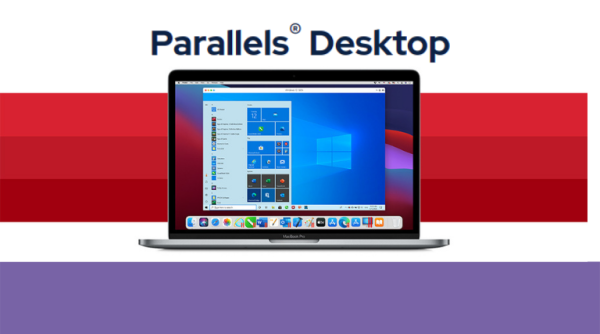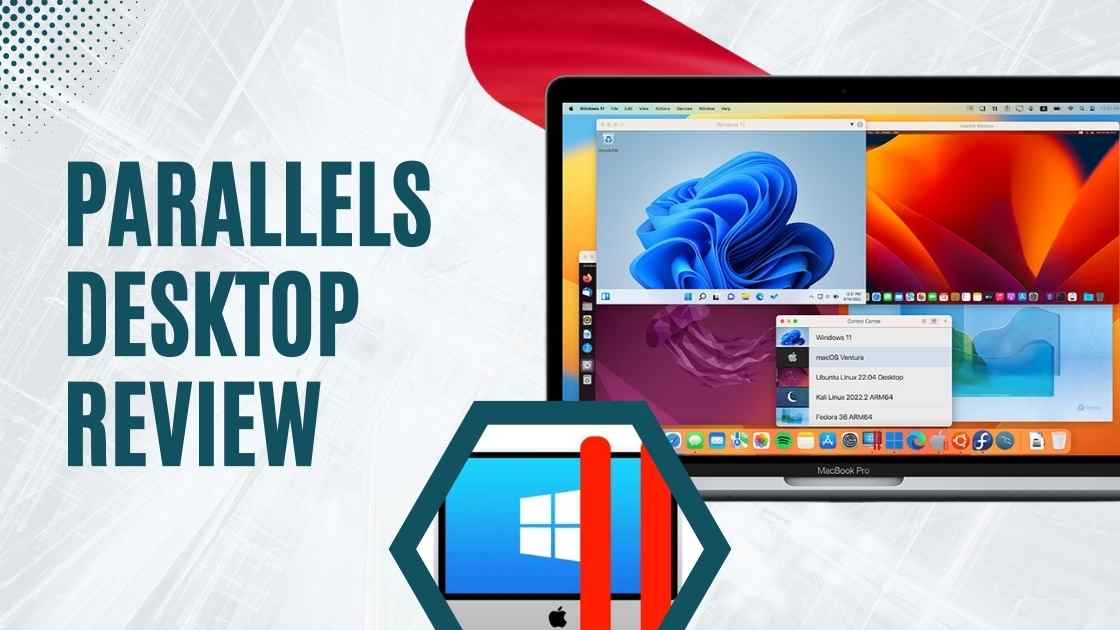In an age when navigating multiple operating systems is more of a necessity than a luxury, Parallels Desktop emerges as a critical solution for Mac users. This Parallels Desktop review delves into Parallels Desktop’s complexities and quirks, examining its capabilities and features, and weighing its benefits against its drawbacks.
As the landscape of remote work and cross-platform applications evolves, understanding how tools like Parallels Desktop can align computing needs across disparate environments becomes increasingly important. Join us as we explore Parallels Desktop’s enigmatic allure and why it remains a preferred sanctuary for Mac users seeking seamless integration of Windows applications
What’s in this article?
What are Parallels?
Parallels, an enigmatic ensemble of virtualization software, unveils Parallels Desktop as its quintessential offering. This software crafts a virtual haven for Mac users, a realm where Windows, Linux, and sundry operating systems coalesce within macOS, sans the need for a system reboot. By conjuring this ethereal space, Parallels Desktop bestows upon users the power to wield applications typically beyond the grasp of macOS, thus enriching productivity and flexibility in equal measure.
How do Parallels work?
Parallels Desktop orchestrates a symphony of virtualization, fashioning a complete operating system environment within the confines of a Mac. It breathes life into the semblance of a PC, allowing Windows and other operating systems to cavort as if upon their native hardware. At its core lies the hypervisor technology, an arcane conduit that channels the essence of the host machine’s hardware, ensuring peak performance. Users navigate seamlessly between macOS and the virtualized OS, indulging in the pas de deux of file transfer and multitasking with unparalleled ease.
How much does Parallels Desktop cost?
The price of Parallels Desktop waxes and wanes with the edition and licensing model chosen, a dance that echoes the cadence of user preference. As of 2024, the standard version beckons individual users with a siren song starting at $79.99 for a one-time tryst, while annual subscriptions offer the allure of ongoing updates and premium support.
Business editions, bedecked with enhanced management features, command a loftier tribute. Yet, Parallels often unveils promotional dalliances, particularly courting students and educational institutions, thus widening its embrace to encompass a broader swath of acolytes.

What platforms does Parallels Desktop support?
Parallels Desktop extends its benevolent hand primarily to Mac users seeking to host Windows, Linux, or even vestiges of antiquated macOS on their present macOS bastions. Its embrace spans across a pantheon of operating systems, from Windows 10 to the myriad incarnations of Linux and even the enigmatic Chrome OS.
This ecumenical compatibility ensures that users may summon forth virtually any application, irrespective of its native habitat. Parallels Desktop, ever vigilant, evolves in tandem with the latest macOS releases, ensnaring compatibility with Apple’s newest innovations.
Getting Started With Parallels Desktop
Embarking on the journey with Parallels Desktop is akin to traversing a well-trodden path through a verdant forest. After procuring and summoning the software from the Parallels sanctum, users imbue their Mac with its essence.
The ritual of installation unfolds with choreographed elegance, guiding users through the inception of their first virtual machine. Armed with the essence of their chosen operating system, users forge ahead, wielding ISO files, physical discs, or even bootable USB drives. Parallels bequeath tools to harmonize macOS with the guest OS, such as coherence mode, weaving a seamless tapestry where apps from distant realms cavort as if native.
What are the speed and performance of Parallels?
Parallels Desktop is hailed for its prowess in the arena of speed and performance, particularly when confronted with the demands of graphic design or the rigors of gaming.
This feat is achieved through a tapestry of optimizations that leverage the innate capabilities of macOS, be they Intel or M1 chips, to orchestrate a symphony of efficiency. Users may tailor their virtual machines, allocating resources with a surgeon’s precision, thus sculpting an environment tailored to their whims.
Parallels Desktop’s Coherence mode not only blurs the boundaries between OS environments but also wields the art of simultaneous operation, ensuring minimal impediments to the rhythm of productivity.
Additional Features and Customizations
Parallels Desktop unfurls a cornucopia of additional features and customizations, elevating the user experience to new heights. Among its treasures lies the ability to invoke macOS gestures within the hallowed halls of Windows applications, a testament to intuitive design. Users may orchestrate a ballet of settings for each virtual machine, from the safety net of automatic snapshots to the sanctity of a “Do Not Disturb” mode.
The Parallels Toolbox emerges as a talisman, a compendium of over 30 tools to streamline daily tasks, from capturing ephemeral moments to fortifying digital fortresses. These offerings, a paean to productivity, bequeath users a realm of control within the virtual cosmos.

Alternatives to Parallels Desktop
While Parallels Desktop holds court as the preferred sanctum for Mac users seeking communion with Windows and other operating systems, alternatives do linger on the fringes. VMware Fusion, a stalwart competitor, extends a hand to professional users and developers, offering a symphony of virtualization akin to Parallels.
VirtualBox, a free and open-source sage, though lacking in certain refinements, suffices for the needs of the discerning few. For those ensconced within the Apple ecosystem, who seek solace solely in Windows, Boot Camp stands as a venerable edifice, albeit one that necessitates a pilgrimage through the realm of system reboots.
Also Read : Web.Com Reviews: A Worth Choosing Platform or Not?
FAQs : Parallels Desktop Review
Que: Is the software easy to install?
Ans: Yes, Parallels Desktop features a straightforward installation process with guided setup.
Que: Can I use gaming consoles with Parallels?
Ans: While Parallels supports some gaming, it does not support the direct use of gaming consoles.
Que: What if I need help with parallels?
Ans: Parallels offers comprehensive support through guides, community forums, and direct customer service.
Que: Are updates included in the standard license?
Ans: Updates for the current version are included; major upgrades may require a new purchase or subscription.
Que: Can I use multiple operating systems simultaneously?
Ans: Yes, users can run multiple OS instances simultaneously, depending on their Mac’s capabilities.
Que: Can I transfer my license to another Mac?
Ans: Yes, licenses can be transferred, but they may require deactivation on the old machine first.
Final Verdict
Parallels Desktop for Mac 2024 emerges as the paragon of virtualization software, a beacon of performance, compatibility, and user-centric design. It stands tall, empowering Mac users to traverse the chasm between macOS and its distant kin, without the shackles of rebooting.
The integration of macOS gestures within the Windows tapestry and the harmony of multiple OS environments testify to its finesse and appeal, captivating users from all walks of life. Yet, amidst its splendor, the specter of cost looms, a consideration for those counting their coins. The allure of ongoing subscriptions, while enticing, may weigh heavy on the purse strings over time.

